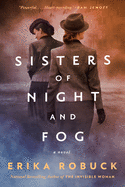
| Publisher: | Berkley | |
| Genre: | Women, Fiction, Historical, World War II | |
| ISBN: | 9780593102169 | |
| Pub Date: | March 2022 | |
| Price: | $17 |
| Fiction |
by Erika Robuck
Two women find themselves working tirelessly against the Nazis as World War II sweeps Europe. In her seventh historical novel, Sisters of Night and Fog, Erika Robuck (The Invisible Woman) weaves a gripping tale of Virginia d'Albert-Lake, an American Resistance fighter married to a Frenchman, and Violette Szabo, a fiery young French-British widow-turned-spy.
Robuck begins the women's stories separately, detailing Virginia's idyllic existence with her loving French husband and scrappy Violette's struggles to find her place in a world at war. Both women eventually decide to take a larger role against Hitler's regime: Virginia and her husband join a Resistance network and begin harboring fugitive pilots, while Violette--widowed with a young daughter--trains as a British spy to be dropped into occupied France. The women first cross paths briefly at a railway station, but when they are later captured (separately) and sent to Ravensbrück, the Nazis' largest concentration camp for women, they become comrades and friends.
Framing her story with scenes from a return trip to the camps in 1995, Robuck drops her readers repeatedly into the vivid, chaotic and immediate reality of life in wartime Europe. Both women struggle with fear, grief and trauma, but neither is willing to give a single inch to Hitler and his lackeys, even at great peril to themselves. Robuck's narrative is an unflinching portrait of the Nazis' horrifying attempts to subdue Europe, but she paints an even more compelling picture of both women and their deep courage. Readers will be inspired and moved as they race to the last page. --Katie Noah Gibson, blogger at Cakes, Tea and Dreams
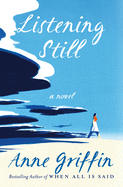
| Publisher: | St. Martin's Press | |
| Genre: | Women, Literary, Fiction | |
| ISBN: | 9781250200617 | |
| Pub Date: | March 2022 | |
| Price: | $27.99 |
| Fiction |
by Anne Griffin
Jeanie Masterson can hear the dead, and they can hear her. Inevitably, this results in her commitment to the family mortuary business in Kilcross, Ireland.
As in her well-received debut novel, When All Is Said, Anne Griffin writes sensitively in Listening Still of life's most dreaded event, death, and removes the fear. "The dead and their needs were ours to bear," Jeanie learned as a toddler, accepting that she'd inherited the Masterson gift as "the conduit" between the recently deceased and their loved ones. Relaying words from the beyond, she sometimes edits messages to spare the feelings of the living, which can torment her, but her choice infuses the novel with a sense of kindness. Yet Jeanie, at 32, grapples with a temptation to leave her career, realizing that her extraordinary talent doesn't include communicating honestly with her beloved husband, Niall--or even with herself.
In first-person narration enriched with Irish vernacular and dialogue, including voices from the mortuary, Jeanie recalls her life. Engaging characters include her group of lifelong school friends, her close-knit family, dear Niall and her dashing teenage sweetheart, Fionn, who once tempted her to leave Kilcross, a decision she still questions. Her parents' surprise retirement and Niall's hope for children force her to examine her choices. She's exhausted from "the intensity of... ensuring I was doing the best job possible" and contemplating motherhood: if she hands down her gift, "an innocent child would carry the burden of its pressures and expectations." Jeanie boldly considers new options, while characteristically "always wanting to do right by everyone." This, ultimately, includes herself. --Cheryl McKeon, Book House of Stuyvesant Plaza, Albany, N.Y.
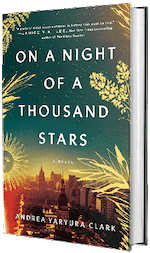
| Publisher: | Grand Central Publishing | |
| Genre: | Women, World Literature, Argentina, Historical - 20th Century, Romance, Fiction | |
| ISBN: | 9781538720295 | |
| Pub Date: | March 2022 | |
| Price: | $28 |
| Fiction |
by Andrea Yaryura Clark
Andrea Yaryura Clark's debut novel, On a Night of a Thousand Stars, is a powerful meditation on generational trauma, a coming-of-age story full of surprising revelations that delve into the silences surrounding Argentina's Dirty War. Clark's narrative follows dual tracks, the first set in the late 1990s and focusing on Paloma, an American college student accompanying her Argentine parents to their home country, where her father, Santiago Larrea, will be receiving a prestigious ambassadorial appointment. Paloma's perception of her father is shaken when she learns that he ran a safe house for people fleeing Argentina's political dictatorship in the 1970s, something that he now refuses to talk about. Faced with his silence, she tries to reconstruct his past on her own, revealing hidden truths about her wealthy family that are woven into a period of Argentina's history that some would rather forget. Concurrently, Clark takes us back to the 1970s to depict the tragic romance that spurred Santiago's transition from an apolitical ladies' man to someone willing to take great risks on behalf of the politically repressed.
In their respective narratives, Paloma and Santiago are both young and somewhat aimless, in the process of figuring themselves out and shielded by their wealth and privilege. The Larrea family's vast agricultural interests around Argentina "could produce enough grain to feed the entire population of Paraguay," and Paloma reflects that "the immensity of such a privilege and responsibility felt overwhelming, so my response had always been never to think about it." Similarly, Santiago gives little thought to the political turbulence leading up to the return of General Juan Perón from exile until violence erupts around him, and even then his interests soon shift back to pursuing the beautiful Valentina Quintero. It's only as their relationship develops that Valentina's convictions begin to change him, to shatter his naive perspective on their nation. One of the novel's chief themes is the obliviousness born of privilege, and how world-changing it can feel when that obliviousness is dispelled and hard truths absorbed.
Paloma's research into her father's activities is accompanied by her growing awareness of Argentina's complex relationship with its past. For many people, like her father, the past is filled with pain and hard choices that they would rather bury. The same holds true for those who played active roles in the Dirty War, including torturers and murderers who, under a blanket pardon, have moved on to play major roles in Argentine government and society. But then there are those who won't forget, who can't forget: the relatives of the desaparecidos, the "disappeared," those who vanished into the bowels of the state's security apparatus during the worst years of the dictatorship. Paloma's individual struggle against her family's deliberate forgetfulness joins with the national struggle as she becomes close with Franco Bonetti, a member of an activist group run by children of the "disappeared." As their relationship develops, she learns about the imprint that the military dictatorship left on so many, and her increasingly disturbing discoveries about her own past link her ever closer to that national trauma.
The novel becomes a descent into darkness as Paloma learns the bitter truth about her family, and Santiago's romance with Valentina in the 1970s is disrupted first by distance and miscommunication, and then by the chaos and fear enveloping the country. Clark, who grew up un Argentina during the 70s, excels at demonstrating how life goes on even during terrifying times, showing romance and jealousy and heartbreak existing even inside a violently repressive regime. In one particularly memorable passage, Valentina and Santiago go to an idyllic, secluded spot to swim, only to find a car buried under vegetation: "a four-door Renault, the color red in the parts that had not been burnt. They peered inside. Half expecting to find a charred body, they sighed with relief when they didn't." When Santiago suggests that they report what they found, Valentina says: "To who? The police? No way. What if they had something to do with it?" Things become darker still when Clark eventually takes readers inside one of the regime's notorious torture centers. But this is counterbalanced by the unexpected acts of bravery the author depicts, as well as the relationships and romances that come to mean everything in a world where truth is hard to find.
Paloma's cozy life with her wealthy family cannot survive to the end of the novel, at least not in the same configuration. But there is hope in the connections she builds beyond them, as well as in the power of dispelling ignorance and lies. Early on in the novel, Paloma sees the Madres de Plaza de Mayo, mothers of disappeared children who "won't stop coming to the square until the Government tells them what happened to their children. They're here every Thursday. It's been twenty years now." On a Night of a Thousand Stars so vividly depicts the agony of uncertainty, of not knowing the truth, that Paloma's journey can't help but feel oddly triumphant. She may have lost her innocence, but she's gained a much deeper understanding of herself, her family and her country. On a Night of a Thousand Stars suggests that any hope of healing can come only after the truth is out. --Hank Stephenson
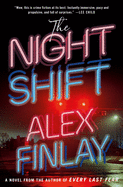
| Publisher: | Minotaur | |
| Genre: | Police Procedural, Small Town & Rural, Mystery & Detective, General, Suspense, Thrillers, Fiction | |
| ISBN: | 9781250268884 | |
| Pub Date: | March 2022 | |
| Price: | $27.99 |
| Starred | Mystery & Thriller |
by Alex Finlay
The Night Shift, an intense thriller by Alex Finlay, begins on New Year's Eve in 1999 at a Blockbuster Video in Linden, N.J. While the store shuts down for the night, its manager--Steve, barely out of his teens--ponders his evening plans and vaguely wonders whether any of the concerns about Y2K will become a reality. But the potential digital catastrophe is the least of his worries, because by the end of his shift, he and three other store employees will be murdered. Only one employee, Ella, a teenage girl, survives.
Fifteen years later, FBI agent Sarah Keller (also featured in Finlay's Every Last Fear) is assigned to help Linden law enforcement with a chilling case: three people were found slaughtered in an ice cream shop. There is one survivor, a teenage girl. The similarities to the Blockbuster killings are too obvious to ignore. The suspect of the earlier case is still at large, causing those who are trying to solve the recent mystery to wonder whether the mass murderer is back.
Finlay grabs readers' attention in a shocking and breathtaking way: the nostalgia-imbued prologue depicts a group of young people on the cusp of a new millennium and perhaps brighter futures. But all of that is ripped away in an instant. Night Shift unfolds from the perspectives of Ella, Keller and Chris (who's connected to both murder cases); each point of view is compelling in its own way. The story flies at rocket speed, but the devastating punch it packs is due to the affecting characters. --Elyse Dinh-McCrillis, reviewer and freelance editor at The Edit Ninja
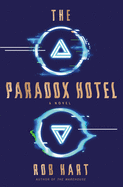
| Publisher: | Ballantine | |
| Genre: | Dystopian, Hard Science Fiction, Time Travel, Thrillers, Fiction, Technological, Science Fiction | |
| ISBN: | 9781984820648 | |
| Pub Date: | February 2022 | |
| Price: | $28 |
| Mystery & Thriller |
by Rob Hart
Rob Hart's trademark melding of mystery, science fiction and a soupçon of supernatural elevates his seventh novel, the highly entertaining The Paradox Hotel. Set in 2072, the novel treats time travel just like a normal vacation--as long as one is mega-wealthy.
The top one percent's new indulgence is the Einstein Intercentury Timeport, for which adventurers are charged a fortune by the U.S. government to go back in time to watch "the first-ever public showing of Hamlet," visit the building of Stonehenge or see real dinosaurs. But the costly project isn't profitable, so the plan to go private has several trillionaires coming to a summit, vying to buy the Timeport. Hotel security head January Cole wrangles the prospective buyers, complaining guests accustomed to ultra-luxury, and smugglers who somehow bypass the strict border checks to bring in dinosaur eggs (which have a habit of hatching). January keeps secret her deteriorating mental health, which includes hallucinations. She's "Unstuck," unsure what is reality because she's made too many trips on the timestream. Her mental state could get her fired, but she's more worried about losing visions of her late lover, Mena, who was a Paradox waitress. January also investigates sightings of a murdered guest, unsure if the death is real or an apparition.
Hart (The Warehouse) cleverly builds an alternative world in The Paradox Hotel, making each aspect of time travel believable while creating realistic characters, both human and artificial, such as January's "googly"-eyed AI assistant, Ruby, who's more cynical and smart-mouthed than she is. --Oline H. Cogdill, freelance reviewer
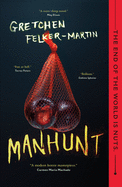
| Publisher: | Tor Nightfire | |
| Genre: | Horror, General, Transgender, Apocalyptic & Post-Apocalyptic, Fiction, Science Fiction, LGBTQ+ | |
| ISBN: | 9781250794642 | |
| Pub Date: | February 2022 | |
| Price: | $17.99 |
| Science Fiction & Fantasy |
by Gretchen Felker-Martin
In Gretchen Felker-Martin's mind-expanding survival adventure, Manhunt, a mysterious plague transforms all cisgender men into feral creatures. Cisgender women and transgender people are immune, and the former want to annihilate the latter.
Beth and Fran, trans women and friends for life, roam the apocalyptic landscape of New England suburbs, hunting the roving packs of beastly men terrorizing the area. Killing one of the infected men is vital for the two friends' survival--they need to harvest the infected males' organs, pack them in dry ice and deliver the package to Dr. Indiresh Varma, who will extract estrogen and testosterone from the organs. Without the hormone supplements, Beth and Fran would become susceptible to the same plague ravaging cisgender men.
Though the friends are armed, they're attacked by a gang of trans-exclusionary radical feminists (TERFs) and a pack of feral men, leaving Beth near death. They're rescued by a trans man named Robbie, who agrees to help Fran transport Beth to Dr. Varma's home. Instead of refuge, they arrive to an explosive situation in Varma's neighborhood, which has been occupied by TERFs. Hate, intolerance and prejudice eventually erupt into an epic, bloody war.
In her acknowledgments, Felker-Martin (Ego Homini Lupus) mentions that she tried "to make this book as gross as possible," even gleefully labeling her novel as "splattercore." But as much as her prose leans far away from beautification, the text serves up a steadfast truth: humans rarely tolerate one another's differences. Thankfully the author surrounds this bitter reality with an incredibly well-told story of survival. --Paul Dinh-McCrillis, freelance reviewer

| Publisher: | St. Martin's Griffin | |
| Genre: | Romantic Comedy, Romance, Contemporary, Medical, Fiction | |
| ISBN: | 9781250805980 | |
| Pub Date: | March 2022 | |
| Price: | $16.99 |
| Romance |
by Mazey Eddings
Only a writer as creative and perceptive as neurodiverse author Mazey Eddings could have made a dental school in Philadelphia, Pa., the perfect place to set an edgy romantic comedy. In A Brush with Love, her first novel, she plumbs deep roots, both literally and metaphorically, exploring challenges faced by two young dental students. Their unexpected chance meeting upends their lives.
Harper is an intense person, a driven perfectionist, whose battle with a general anxiety disorder stems from the sudden loss of her parents when she was only 12. She has succeeded in being a top student at Callowhill University's School of Dental Medicine, channeling protracted sorrow by throwing herself headlong into her medical studies. As a senior near graduation--though she intends to continue studies in oral surgery--one day she falls down a flight of stairs onto a freshman named Dan, completely destroying a 3D model made for one of his courses. Dan wanted a career in finance but, faced with familial expectations, he begrudgingly enrolled in dental school. Their meet-cute collision ignites a spark that turns into a romance. Their attraction, however, brings their individual sordid pasts and emotional scars to the fore, challenging what they know about themselves, each other and the push and pull of their lusty passions.
Eddings's energetic story appears, on the surface, entertainingly frothy. However, as she focuses on her quirky characters--revealing who they truly are and why--readers will discover much deeper, thought-provoking emotional issues. --Kathleen Gerard, blogger at Reading Between the Lines
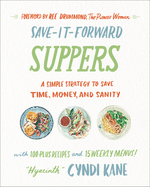
| Publisher: | Morrow Cookbooks | |
| Genre: | Comfort Food, Cooking, Quantity, Quick & Easy, Methods | |
| ISBN: | 9780063042704 | |
| Pub Date: | March 2022 | |
| Price: | $27.50 |
| Food & Wine |
by Cyndi Kane
Cyndi Kane, also known as "Hyacinth"--Pioneer Woman Ree Drummond's best friend--has created a delectable and immensely practical cookbook in Save-It-Forward Suppers: A Simple Strategy to Save Time, Money, and Sanity. Cooks who want to provide vibrant meals without the effort or expense of cooking a full meal every night will approve of the "Save-It-Forward" method. Save-It-Forward Suppers offers more than 100 recipes, broken into weekly menus with five or six delicious meals that build upon each other. For example, during a grains-focused week, on a Monday the menu suggests Chicken Milanese with Lemony Arugula and Quinoa Tabbouleh. Several of the items from that first meal are "Save-It-Forward" items that will be used later in the week--extra chicken breasts become Chicken Parmesan over Creamy Polenta on Wednesday, and additional quinoa turns into Beef, Black Bean, and Quinoa Enchiladas on Thursday.
With beautiful watercolor illustrations of each recipe and clear instructions on what to "save" for later use and where to take shortcuts ("this recipe... is just an assemblage of ingredients... the Save-It-Forward method lets you have a healthy home cooked meal with almost no prep"). Save-It-Forward Suppers is perfect for busy families that want to eat mostly home-cooked food. Menus cover surf 'n' turf, comfort foods and cooking with pantry staples, making it helpful for any cooking occasion. A welcome addition to any cookbook library, with meals from a wide variety of cuisines, Save-It-Forward Suppers is the best of both worlds: both pragmatic and beautiful. --Jessica Howard, bookseller at Bookmans, Flagstaff, Ariz.

| Publisher: | Random House | |
| Genre: | Biography & Autobiography, Form, Personal Memoirs, Comedy, Literary Collections, Humor, Essays, Performing Arts | |
| ISBN: | 9780399180514 | |
| Pub Date: | March 2022 | |
| Price: | $28 |
| Starred | Biography & Memoir |
by Bob Odenkirk
"Overall, I've had more gains than losses," writes Bob Odenkirk (A Load of Hooey) toward the end of Comedy Comedy Comedy Drama, but he has a funny way of showing it. In his entertaining memoir, heavy on the failure, the sketch comedy great turned quote, unquote, serious actor offers a good explanation for why he doesn't skimp on the lowlights: "I tried just as hard at the stuff that didn't work as I did at the stuff that worked."
Odenkirk, born in 1962, writes about his "deeply unspecial suburban upbringing" in Naperville, Ill., his lackluster attempts at stand-up in Chicago, and his unsatisfying stint writing for Saturday Night Live. After more than three seasons at SNL, he fled to Los Angeles to slake his hunger to perform and made a comedy love connection with fellow fringe dweller David Cross, with whom he created HBO's venerated sketch comedy Mr. Show. Then it was lather, rinse and repeat with failures and successes, which include Odenkirk's triumph as morally dishonorable Saul Goodman in Breaking Bad and its spin-off, Better Call Saul.
Odenkirk--who has consistently worked with writing partners throughout his career but penned this memoir alone--writes with a sharp quill: he describes comedy legend Del Close as known for "spouting a run-on sentence that Jack Kerouac would struggle to follow." Discouraged creative types might find psychic uplift in Odenkirk's accounts of his career setbacks: "I've always believed good things might happen if I just hung in there and showed up with my best effort." Comedy Comedy Comedy Drama is among Odenkirk's best efforts. --Nell Beram, author and freelance writer
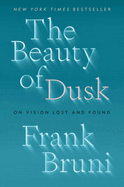
| Publisher: | Avid Reader Press | |
| Genre: | Biography & Autobiography, Medical (Incl. Patients), Self-Help, Personal Memoirs, Aging | |
| ISBN: | 9781982108571 | |
| Pub Date: | March 2022 | |
| Price: | $28 |
| Biography & Memoir |
by Frank Bruni
"The affliction that stole my vision, or at least a big chunk of it, did so as I slept," writes Frank Bruni (Born Round) in his memoir The Beauty of Dusk. The New York Times columnist was 52 in 2017 when he experienced the first hint that something was wrong with his right eye: he tried to pour water into his French press but missed. A neuro-ophthalmologist told him the cause was a rare form of stroke known as NAION, or non-arteritic anterior ischemic optic neuropathy. The book documents Bruni's ordeal, including the emotional toll of encountering a disability "long before old age" and the damage it brought to his psyche and to his relationship with his partner, Tom. Bruni also includes graphic descriptions of the treatment, including an injection straight into his eye that felt like "a splash of acid delivered with a heavyweight's punch," and philosophical discourses on what it means truly to see.
Bruni devotes much of his book to others who overcame challenges of aging or illness--from a Vegas restaurant manager whose eyeballs consistently shake, making his vision blurry, to a District of Columbia circuit court judge who refuses to let his blindness derail a distinguished juridical career. Some of Bruni's epiphanies are obvious: that the ambitious should occasionally interrupt their pursuit of power to appreciate the splendors all around is not an original insight. But this book is a welcome reminder, despite the inevitability of dusk in each person's life, of how "enriching and beautiful that dusk can be" when one examines it closely. --Michael Magras, freelance book reviewer
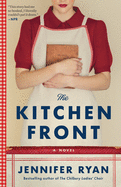
| Publisher: | Ballantine | |
| Genre: | Women, Sagas, Fiction, Historical, World War II | |
| ISBN: | 9780593158814 | |
| Pub Date: | February 2022 | |
| Price: | $17 |
| Now in Paperback |
by Jennifer Ryan
Boy, do the contestants on The Great British Bake Off have it easy. In Jennifer Ryan's beautifully executed novel The Kitchen Front, four Englishwomen competing in a BBC radio cooking contest during the summer of 1942 must cope with Nazi bombers flying overhead, a scarcity of ingredients and rigidly defined gender roles.
The women, who are vying to become the show's cohost, are as different as their reasons for competing, which become clear as the novel's point of view roves from contestant to contestant. Audrey, a recent war widow and mother of three, is barely getting by with her small baking business. She's up against (and in financial debt to) her sister, the self-important Lady Gwendoline Strickland, who suffers the indignity of competing against her own skittish young kitchen maid, Nell. The fourth contestant is Zelda, who misses no opportunity to boast that before "four hundred pounds of Nazi cordite" demolished the Dartington Hotel, she was its deputy head chef--a job for which, as a woman, she had to fight mightily. An aspect of her life that the unmarried Zelda isn't broadcasting: she's pregnant.
With The Kitchen Front, Ryan (The Chilbury Ladies' Choir) delivers a scrupulously researched entertainment full of unexpectedly scintillating discussions about wartime food strictures and substitutions. There are few stiff upper lips on view in the novel, which frequently takes maudlin turns. If readers want to cry into some elderberry wine, they can follow the recipe provided--one of 20 period recipes scattered throughout the book. --Nell Beram, author and freelance writer
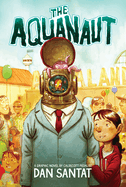
| Publisher: | Graphix | |
| Genre: | Animals, Humorous, Fantasy, Marine Life, Juvenile Fiction, Comics & Graphic Novels, Action & Adventure | |
| ISBN: | 9780545497602 | |
| Pub Date: | March 2022 | |
| Price: | $24.99 |
| Starred | Children's & Young Adult |
by Dan Santat
Dan Santat (Sidekicks; The Adventures of Beekle) mixes the silly with the serious in the delightful adventure graphic novel The Aquanaut. Caldecott winner Santat, using his trademark illustrative style, creates a spirited and thrilling story for middle-graders.
Sophia has lived with her Uncle Paul since her father died at sea. He had been doing research with his brother to help expand the mission of their marine park, Aqualand: saving endangered sea life. Sophia is depressed, doing poorly in school and struggling with the tragedy. Uncle Paul is wrapped up in guilt and trying to maintain the mission of Aqualand, which, because his single investor wants it to be more of an attraction, is slowly turning into a kind of Sea World. At the marine park, Sophia meets an aquanaut in an old-fashioned diving suit piloted by four rare sea animals. Sophia and the aquanaut have a connection, and they're soon off finding plenty of trouble for all the right reasons.
The authenticity of Santat's characters keeps readers invested in their experiences, and the marine characters provide a lightness--their bumbling efforts to understand the human world (what they call "space") are amusing and uplifting. Santat's thick broken line creates a feeling of motion and energy; his dramatic use of shadows and his character's bulging eyes enhance the intensity and suspense; and his thoughtfully orchestrated use of panels heightens the humor and tension. The Aquanaut is a moving and entertaining read that should engage adventure and science fans alike. --Jen Forbus, freelancer

| Publisher: | Bala Kids | |
| Genre: | Values & Virtues, Social Themes, Self-Esteem & Self-Reliance, Juvenile Fiction | |
| ISBN: | 9781611808971 | |
| Pub Date: | February 2022 | |
| Price: | $16.95 |
| Children's & Young Adult |
by Allysun Atwater, illust. by Stevie Lewis
I Am Thinking My Life is an empowering picture book that demonstrates the strength that comes with believing in oneself and shows how a mindful vision of one's world may help shape it for the better.
An opening spread introduces readers to a young Black child who is thinking deeply about their life and their vision of the world. "I am creating a universe," they say. "I breathe meaning into my life through my thoughts and then my actions. I am the architect of my dreams." The child is radiant, loving, creative. They are seeing and becoming. Even when they "think storms," and for a time they are "storms... and thunderclouds... and tears," they may remember to "search inside" until they find sunshine and the clouds roll away.
Allysun Atwater's debut includes deceptively simple text designed to help readers (and herself, as she points out in an author's note) "maintain a positive mindset." She offers the power to "dream, envision, and nurse [one's] ideas and goals into reality," all presented in the very sympathetic form of a child who confidently shapes their own world. Stevie Lewis (Lost in the Library illustrator) uses colorful illustrations nimbly to portray this child who is by turns gleeful, thoughtful, determined, sad and triumphant, and she easily blends their flights of imagination with their reality. I Am Thinking My Life is a solid affirmation of the steps that any reader might take positively to affect their own world view. --Lynn Becker, reviewer, blogger and children's book author
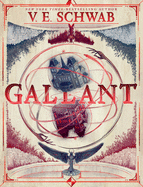
| Publisher: | Greenwillow | |
| Genre: | Orphans & Foster Homes, Dark Fantasy, Fantasy, General, Family, Loners & Outcasts, Young Adult Fiction, Fairy Tales & Folklore | |
| ISBN: | 9780062835772 | |
| Pub Date: | March 2022 | |
| Price: | $18.99 |
| Children's & Young Adult |
by V.E. Schwab, illust. by Manuel Šumberac
Gallant by Victoria Schwab (City of Ghosts) is the brooding, bewitching story of an estate, the shadow it casts and the wall that keeps the two apart.
Olivia Prior lives at Merilance, "an asylum for the young and the feral and the fortuneless," and her most treasured possession is her mother's journal, a cryptic collection of passages and illustrations. At Merilance, Olivia is teased because she cannot speak and ghouls whom only she can see roam the grounds. When a letter arrives inviting Olivia to come home to Gallant, she is certain anywhere is better than Merilance, despite the warning in her mother's diary: "you will be safe as long as you stay away from Gallant."
When Olivia arrives, the housekeeper and steward have no idea why she has come but tell her she looks just like the mother she never knew. Her furious cousin--the only Prior left in the manor--insists she leave. Olivia doesn't know his anger is because the Priors are cursed with the task of making sure the gate is never opened and the wall never breached, as they struggle to keep the "master" from entering their world.
Schwab's ethereal prose suffuses her tale with an otherworldly feel that is right at home with its content. Manuel Šumberac's inky black creations are paired with specific pages of journal text, and Olivia pores over them as intently as she does the words. Fans of Neil Gaiman, Melissa Albert and Rin Chupeco should find much to love in Gallant, a place where shadow "forces stain... the world like ink in water." --Lynn Becker, reviewer, blogger, and children's book author